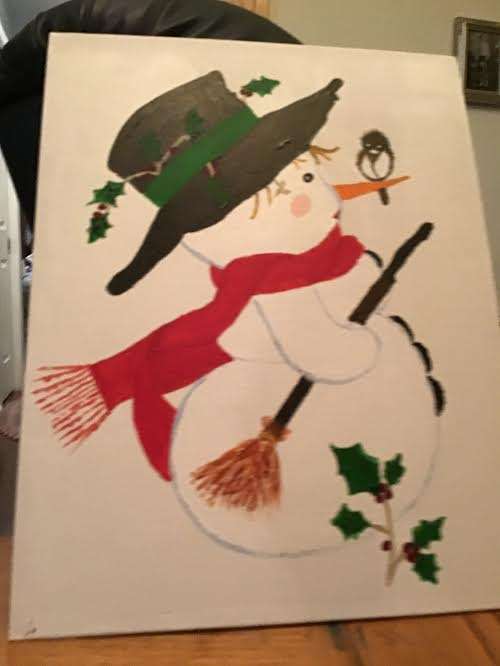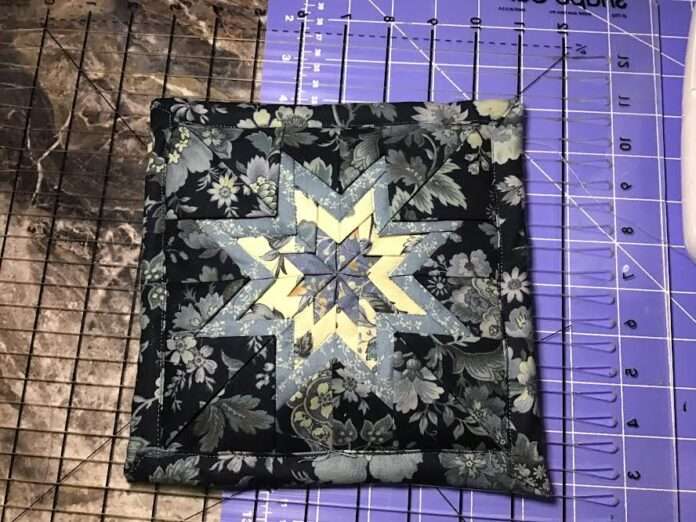Her gripping account of what it feels like to be normal again after a captive and short-circuited existence for 65 years of her life, in the strangle-hold of the most severe and violent form of Familial Tremors, shaken and tossed about helplessly like a rag doll, is an inspiring saga of hope.
A debilitating physical condition that wracked her life for over 60 years has not stopped Pam Morrison (69) from living a reclaimed and normal life now with hope and a sense of fulfillment. Nor has it come in the way of enriching the lives of other people, as much as her own, with beautiful artworks – both paintings as well as engaging handicrafts – that somehow reflect the endearing charm and beauty of her home in Montana, US, that nestles amid the towering and wild magnificence of the Rockies.

Indeed, her creative artworks exude a gentle and reassuring warmth with that typical folksy flavour of country life. Every creation of hers has an exclusive touch of charismatic charm, a labour of love – a work of art that softly beckons or gently tugs at your heart-strings.
In an exclusive and intensive interview with Pravasi Samwad, Pam Morrison unfolds a gripping account of what it feels like to be normal again after leading a captive and short-circuited existence for 65 years of her life, in the strangle-hold of the most severe and violent form of ‘Familial Tremors’, shaken and tossed about helplessly like a rag doll.
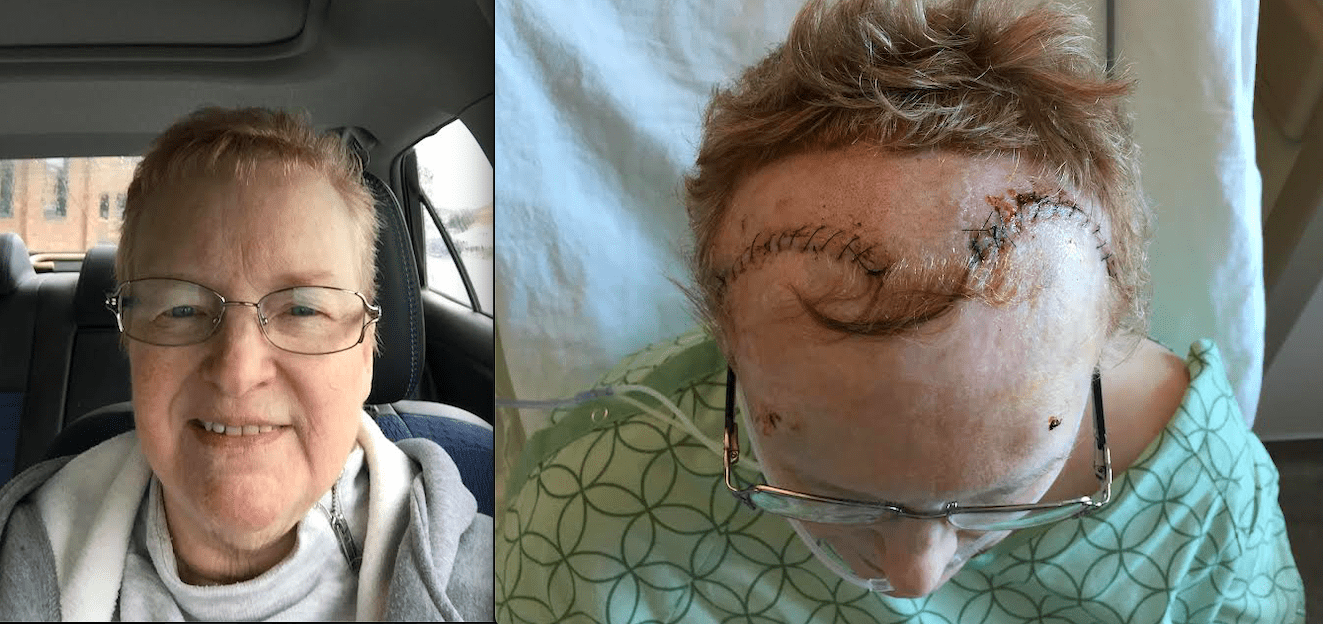
While it does bear a strong resemblance to Parkinson’s Disease, these tremors are not terminal / fatal, and are passed down as a hereditary factor and that explains the term ‘Familial Tremors’.
Pam attributes her return to normal, tranquil life as nothing short of a miracle. It all began suddenly one day when she was 4-5 year-old, pre-school going child.
“I hadn’t started going to school yet. And then it happened. I felt a faint tremor in my right hand. As time went by, the tremors steadily increased in frequency and intensity”.
By the time she was 50, the condition had spread and taken hold of every part of her body, every aspect of her life. It had turned so violent that doing the simplest of tasks like eating food or drinking a cup of coffee became a daily ordeal.

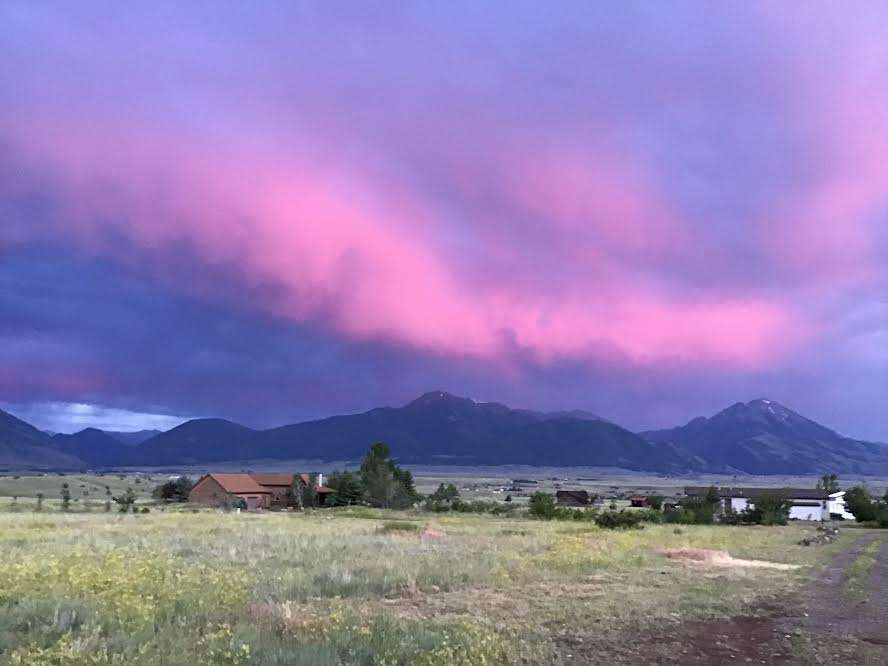
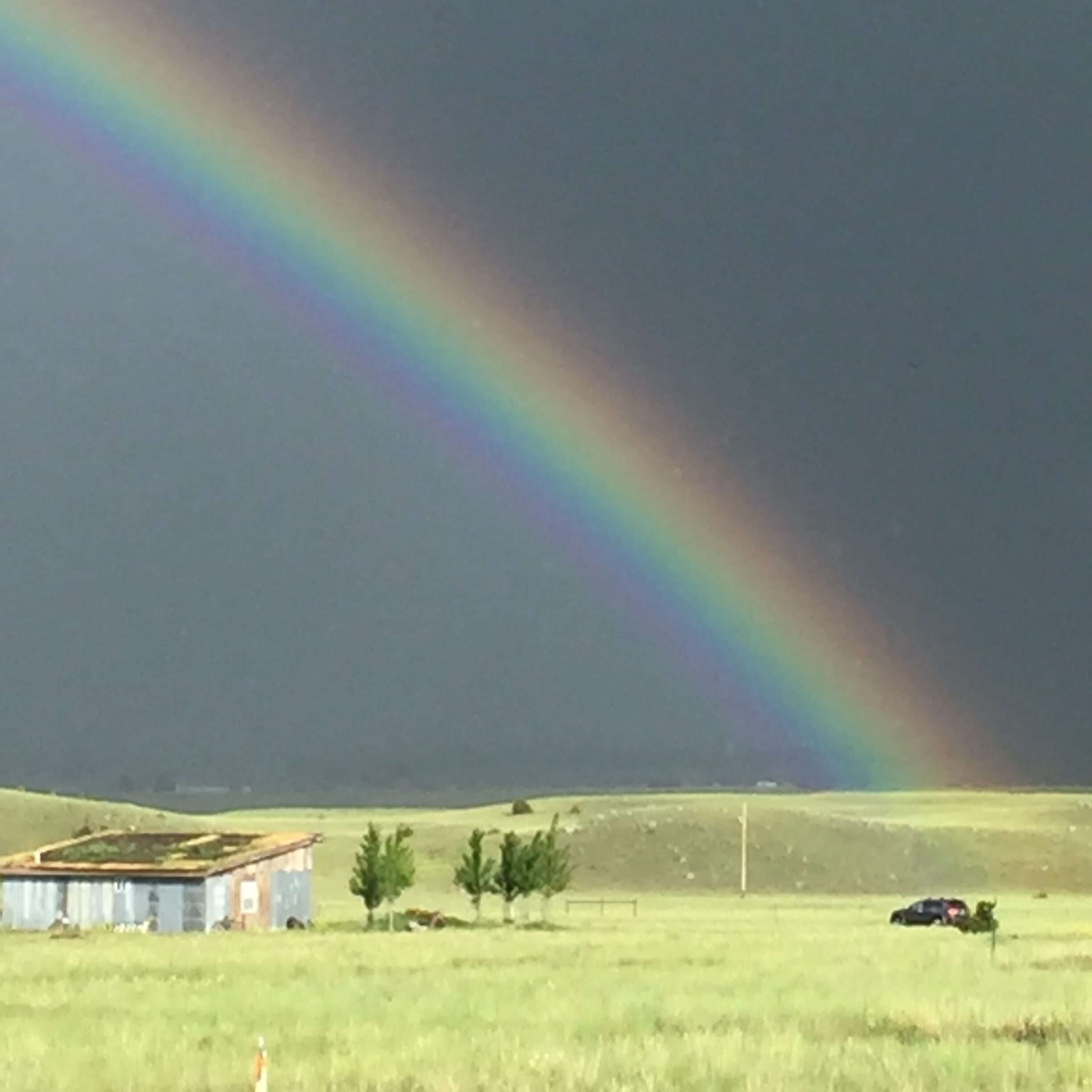
“I suppose you might say that I was practically, at the end of my tether, but I was never the kind of person to give up without putting up a fight. That would’ve probably meant accepting my situation as an unavoidable quirk of life. And that’s when I decided to take the bull by the horns, check out all the options available and see how best to possibly turn things around”.
But the road to actually getting the surgery done was a long, arduous, uphill climb all the ways, recalls Pam.
“Physically I qualified for the procedures, but I would need to have a series of psychological tests first. Following that there were memory and reasoning tests, all done in Montana. The results were good. Then there were meetings with the hardware / software companies. I finally decided to opt for the Abbott system because it was programmable remotely.
“I also had to go through a series of meetings / tests with the cardiologist and a pulmonologist, had to have another brain MRI, had to have lung X-rays and lung function tests. These were all done in Florida and it was time-consuming and equally tedious as well.

But circumstances or Providence, or a combination of both, may often alter situations beyond your ken and in doing so irrevocably change the direction of human lives.
One of the reasons Pam chose Florida for surgery was because her sister lived there. It followed as a matter of course to seek out a surgeon in the Sarasota area at Sarasota Memorial Hospital, Florida, and secure a preliminary appointment in January 2020.
There was just one drawback: They would only do one side of her brain, but that was only half the answer to the problem, since her tremors affected both sides of her body. And DBS offered the best possible solution, with simultaneous surgery on both hemispheres of the brain.
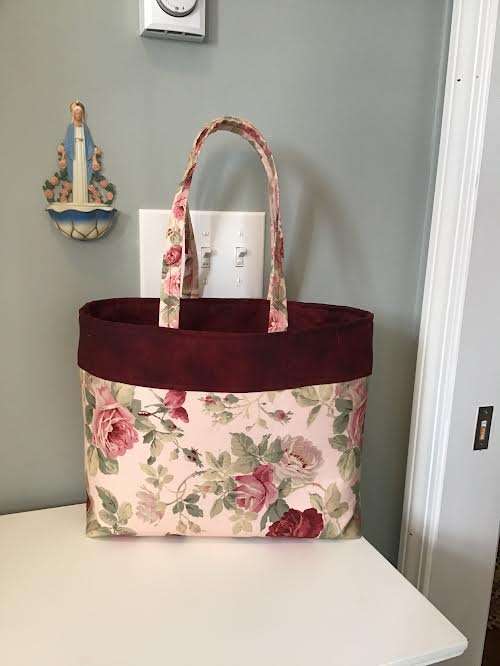
Pam recalls another round of examinations with a whole range of medical specialists. “Not being a local resident of Florida, made matters all the more difficult. I had to wait to be scheduled for appointments. It was not until the 29th of February, 2020 that I received a surgery date – April 21st, 2020”.
However, it soon became clear that the pandemic was not going to allow the surgery to move forward; as it was considered a, “non-essential” surgery and so it was cancelled. A subsequent rescheduling for September 2020 was also cancelled once more.
But Morrison obstinately kept slugging away at all obstacles that kept coming her way. That was when she also started examining other options. “I got to thinking that there ought to be a less invasive procedure. After some painstaking research, I found out about MRI guided Focused Ultrasound. I sought out facilities out west that specialised in that procedure and chose Salt Lake City, Utah.
Later last Spring, Morrison travelled to SLC and spent a week there meeting with movement and balance specialists, having another round of brain MRI’s,, meeting with their neurologist and then a neurosurgeon. It was my intention to have the Focused Ultrasound procedure done. But it was only in the last few minutes of my meeting with the neurosurgeon that he said the magic words for me, “BILATERAL DBS or Deep Brain Stimulation”!!
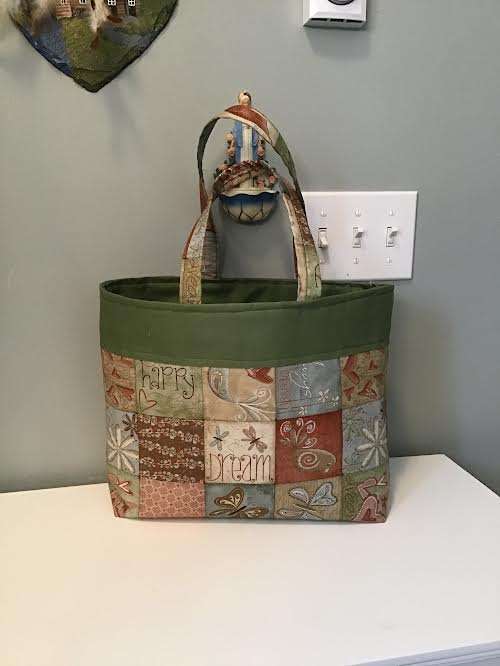
Bilateral DBS is a procedure done on both hemispheres of the brain simultaneously. Keeping in mind the risks involved and the seriousness of the surgery, Morrison was rather keen that if it could an all be done in one session, why not get it over and done with at one go. “This was right after he explained that the Focused Ultrasound procedure might sound “less invasive” BUT there were risks there also.
Explaining briefly what made her opt for Bilateral DBS Morrison explains: “With Focused Ultrasound, they use laser to destroy the affected part of the brain causing the tremors. IF they miss even by a hair breadth or if they destroy more brain cells than necessary, the patient can suffer permanent side-effects or damage. For instance, If you have a problems with your speech or walking, it is permanent and you are stuck with it. In the next sentence he mentioned ‘Bilateral DBS’ and my decision was made in five seconds”.
Unbeknownst to Morrison and a great majority of the population, DBS surgery is very common and extremely safe. The premise of the procedure is that the brain is minutely mapped by the MRI. There are certain cells within the Thalamus in the brain that go rogue and cause too many movement signals to be sent to the muscles, thus causing you shake without stopping.
Morrison explains “The MRI can isolate those few cells and then during the surgery the MRI mapping is ‘married” to its surgical guidance software.
A halo or metal circlet is placed around your head to ensure that not even a micro-millimeter of movement takes place and the procedure is performed with pinpoint accuracy. Then the wires and leads are fed down through the brain and the leads deployed in just the right spots to control those brain cells.
“I firmly believe it is the divine intervention of God on the one hand, and the fantastic blend of modern medicine and technology on the other. That is what has enabled me to walk through the ‘Valley of the Shadow of Death’ unscathed and make a new start in life”.
This highly complex two-stage surgery known as bilateral DBS – Deep Brain Stimulation – is done within the innermost areas of both hemispheres – the Cerebrum and the Cerebellum – which she had to undergo in November 2021, in a Salt Lake City Hospital, far from her home in Montana.
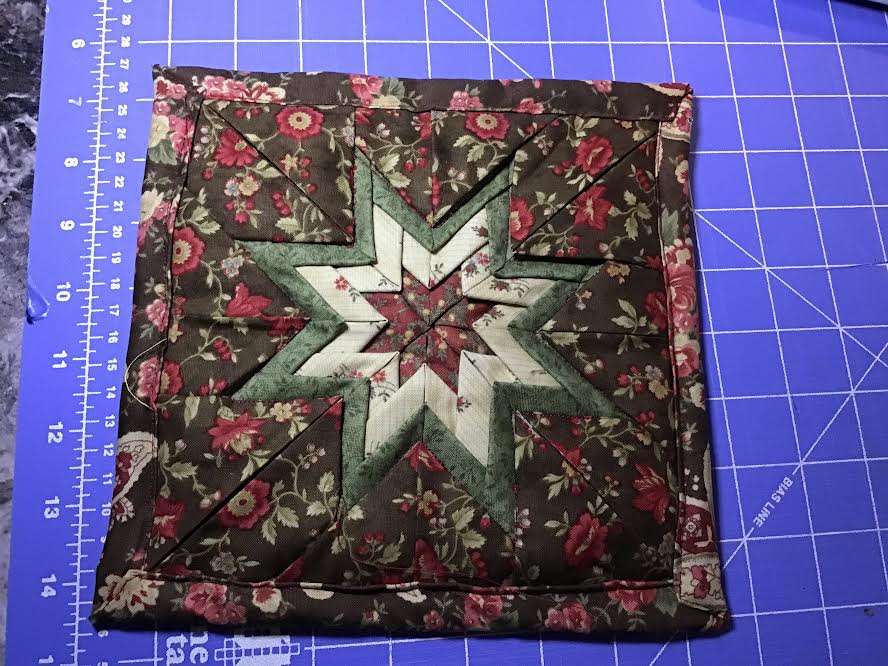
Through this process, neurosurgeons operating on Pam, were able to destroy malfunctioning motor nerves or neurons in both hemispheres of her brain and restore order and normalcy in her life.
What are motor neurons?
Motor neurons are the nerve cells responsible for carrying signals away from the central nervous system towards muscles to cause movement. This can be voluntary, such as reaching out to pick up an item, or involuntary, such as a reflex action that causes a hand to move away from a hot surface within a split second.
Motor neurons are responsible for integrating signals from the brain to the muscles, glands, and organs that intend to carry out the required motor function. Motor neurons allow us to move, talk, eat, swallow, and breathe, therefore without these cells, we would not be able to complete many basic life functions.
For the most part of her working day until she goes to bed at night, Pam now lives a blissfully normal and tranquil life. To reach deep inside the innermost recesses of her brain, the doctors had to drill two holes in her forehead. Then through an ultrasound procedure requiring pinpoint precision and the surest of touch they were able to destroy the malfunctioning brain cells
Now through her cellphone, especially calibrated or programmed to receive the proper signals through the electrodes implanted deep inside both hemispheres of her brain, her motor neurons are able to function to near-normal perfection.
The procedure itself
With Essential Tremor there are specific cells in the brain that control movement. When they go rogue, they send too many movement signals to the muscles, so they continually tremble and shake. Using a brain MRI these cells can be isolated and through the DBS procedure the movement signals can be restored to near normal using an Impulse Generator in the person’s chest.
*A halo or metal circlet is placed around your head to ensure it does not move at all; not even a micro-millimeter of movement takes place and the procedure is performed with pinpoint accuracy. Then the wires and leads are guided down through the brain and the leads deployed in just the right spots to control those brain cells.
*The first procedure involves drilling two bore holes in the skull and guiding wires and leads deep into the brain.
*The second, implants the Generator into the person’s chest. Then an incision made at the back of the ear, where a connector is placed and wires in the brain and the chest are connected.
*Third you meet with a programmer. He then works out a program for the electrical impulses to best manage the movement impulses being sent by the brain and control them to a more normal level.
*This program is then put on your phone and you can control the program right there. And, miraculously, just by pushing some buttons on your cellphone, there are no more tremors.
*The pain, for the amount of cutting etc is remarkably short-lived. The brain itself does not register pain so it is only the scalp incisions and the bone drilling that are an issue. Bleeding is minimal from the incisions, the bore holes are capped with precisely measured caps that fit and seal the holes and then a bone glue and tiny screws are used to complete the seal.
*At first I experienced some real pain but was given a short-term prescription of narcotic pain meds to be coordinated with a higher dose of Tylenol. I took the pain med for 4-5 days and then it was all Tylenol. The Tylenol was only needed for about 10 days. I can feel the caps under the skin and in my case I can see where they are because my hairline goes so far back.
*I can feel all of the incision bumps under where my hair has grown back, but the only trouble spot is at the back of my ear where the “connector” is located.
*This connects the wires from the brain and the wires from the Impulse Generator implanted in the chest. It is the size of my little finger and even now is tender and uncomfortable. It lies on top of a major nerve centre in the head and, since I sleep on my left side, causes me discomfort at bedtime.

“I was not fearful or scared”
“In answer to your next question, was I afraid…no, I was not fearful or scared. My Faith is such that I believed The Lord had brought me to this point, to this procedure which was a miracle and to these doctors who knew what they were doing. The Lord walks with me and takes care of me every moment of every day and He was going to be right there guiding the doctors and preparing the way. It just did not occur to me to be traumatised in any way. He had me in The Palm of His Hand and whatever happened it was His Divine Will”.
Although she is wired to two contraptions inside her body which connects to a third device linked to Morrison’s cellphone that completes the circuit and signal the brain to send the right impulses for proper movement, yet she insists she “does not feel like a Cyborg”.
“The technology works so seamlessly that I was not even aware of it. One second I was shaking uncontrollably and the next I was normal at the touch of a button on my phone. Truly a miracle!
To a question about family support, Morrison replies affirmatively. “My son and daughter-in-law have been with me through every second. My daughter-in-law, Audree took time off from work to drive the 9 hours one way to SLC and back – twice. That’s two round trips, stayed in a motel, transported me to all my appointments all over SLC and the hospital, and was there right through the surgeries. They were both wonderful.
The Other side of myself
As an artist and a craftsperson, Pam’s artworks exude an extraordinary touch of class. One naturally tends to assume she has gone through the rigour and discipline of formal training to reach this level of professional finesse.
But she tells you with a soft smile and a merry twinkle in her eyes: “I have had no formal training in any of these artworks. I just follow my heart and let my creative instincts flow.”
Whether it is her handcrafted creative pieces or her paintings, they all exude a gentle and reassuring warmth with that typical folksy flavour of country life.
Take for instance her elegant handbags, although it would be rather unfair to call them just ‘handbags’, sounds too plebian, I would say. Each and every creation of Pam has an exclusive touch of charismatic charm, a labour of love – a work of art.
Continuing about her journey into the world of art and beauty she explains “I learned basic sewing in high school. My mother, who was also untrained, began painting in oils when she was 65. She was amazing and produced the most gorgeous landscapes.
In 2013 Pam decided to try her hand at making quilts. “I made quilts for myself, my daughter and granddaughters. Then around 2016 I decided to start making holiday floral arrangements and started to paint on slate – mostly holiday scenes. I did a couple of craft fairs at the local school without much success and gave up.
My mother painted with oils but I had always dabbled in acrylics. Then last summer, prior to my DBS surgery, I decided to try oils.
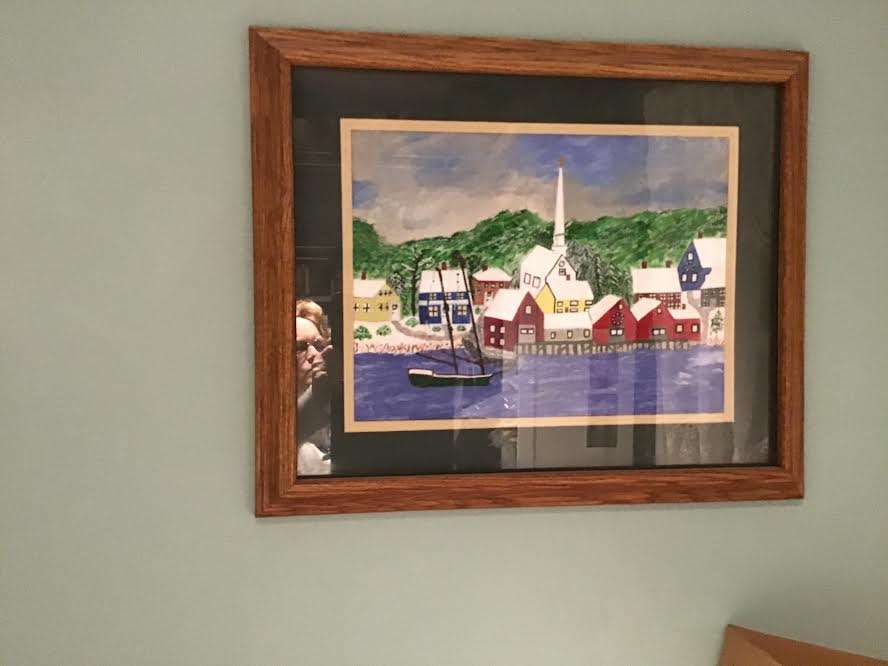
My kids had bought me a Bob Ross kit and I tackled that with little success so I just took a few of his techniques and started painting. I decided to load the paint, very thickly on the brush to give it that textured effect.
Morrison is rather modest and self-effacing about her artistic skills. “To my way of thinking I have no talent for anything – I just have enough skill at a bunch of things to be dangerous as they would say. I can sew a little, paint a little, craft a little. I would like to sell these things but people do not want to pay for things – they do not even want to pay for the materials you have put into a project; you might as well give it away for free or throw it away.
When Morrison moved to Montana 3 1/2 years ago “I had to downsize and got rid of 98 per cent % of my floral arrangements, gave away most of my paintings to my daughter and grand-daughters, donated the bulk of my sewing materials, etc. “
“As the tremors got worse, my health seemed to go downhill. I had severe fatigue and depression and just wanted to stay in bed all the time. Every once in a while, I would decide to paint and once that was done, I would just go back to bed, all my strength and energy drained and depleted.
A small town called Emigrant with only 380 residents
Morrison lives in a very small town in southwestern Montana called Emigrant, with a population of around 380 people! It is in what is called the Paradise Valley, a 60 mile stretch between Livingston and Gardiner which is on the main road into Gardiner, near the North Entrance to Yellowstone National Park.
The area comprises the haves and the have-nots, ie, those with hourly paying jobs, struggling to find housing, make ends meet and raise their families and those who own all of the land, have very large ranches and lots of cattle or have the money to come in from all over and buy up the land, build extravagant ranch-style homes and can afford to come and stay in the summertime.
“Again, I have tried the craft fairs out here with no luck. And have used the social media to buy, swap, yard sale sites with minimal success. People either have no money to afford these types of things, do not appreciate the work that goes into them and want them for 1/8th of what they are worth. Or they’re so well-to-do that unless something has a designer label on it, it is not good enough for them to bother with. I try not to get discouraged but it is hard not to feel that it is a lot of effort for no gain. My gain, I guess is the enjoyment of the actual creating. But then what do you do with all the stuff?
Morrison also makes Christmas ornaments. She hopes to perhaps be able to take part in a couple of the Farmer’s Markets in Livingston once the weather turns warmer and maybe make a little money “as I plan to spend 3 weeks in Maine with my grandchildren later in the year. I have a 9-year-old great-grandson who is my heart, that is growing up without me and I just can’t wait to spend time with him.
In conclusion Morrison says: “Oh, another element of this saga, beyond the brain surgery is that I suffered from severe depression for many years. In 2000 I began taking anti-depressants which, it seemed helped. In October of 2021 just after my brain surgery, I had an issue with my pharmacy who would, for some reason, not renew my prescription for my anti-depressant.
“I had run out and so was not taking them and it was over a month before they refilled the prescription and I thought, Well I’ve gone this long without them, I’m going to try and not take them any more”. And I just stopped. I had been on them for 21 1/2 years! Between the brain surgery and getting off those meds I feel like a new person emotionally and energywise.
But the road she has had to travel has been long and hard. It has taken Pam Morrison a tremendous amount of patience, perseverance, gritty determination and faith to climb every mountain, follow every rainbow to find that new tomorrow, and that promise of new life. In the end this stirring saga will no doubt serve as a source of inspiration for everyone who reads it. (EOM).
